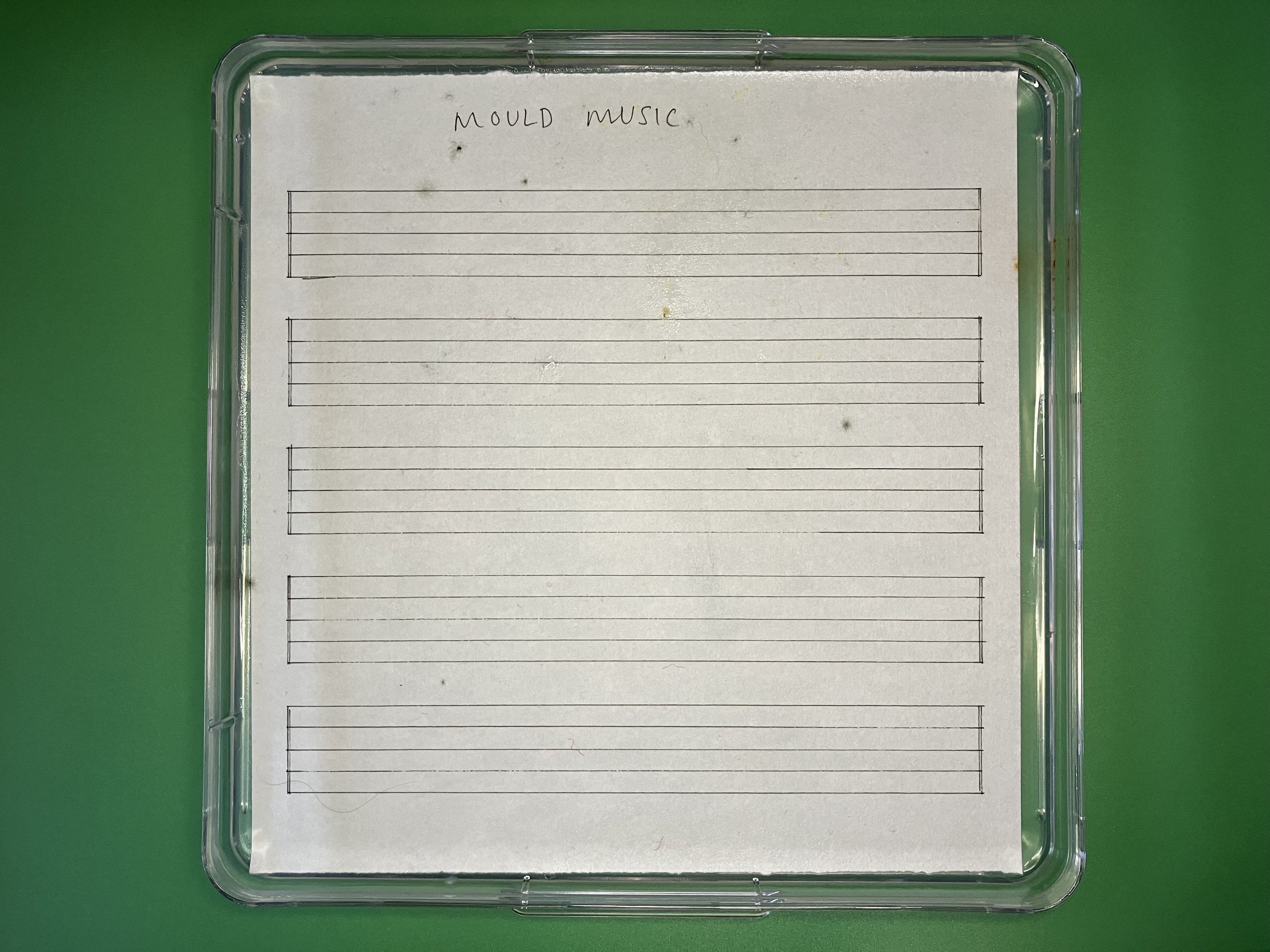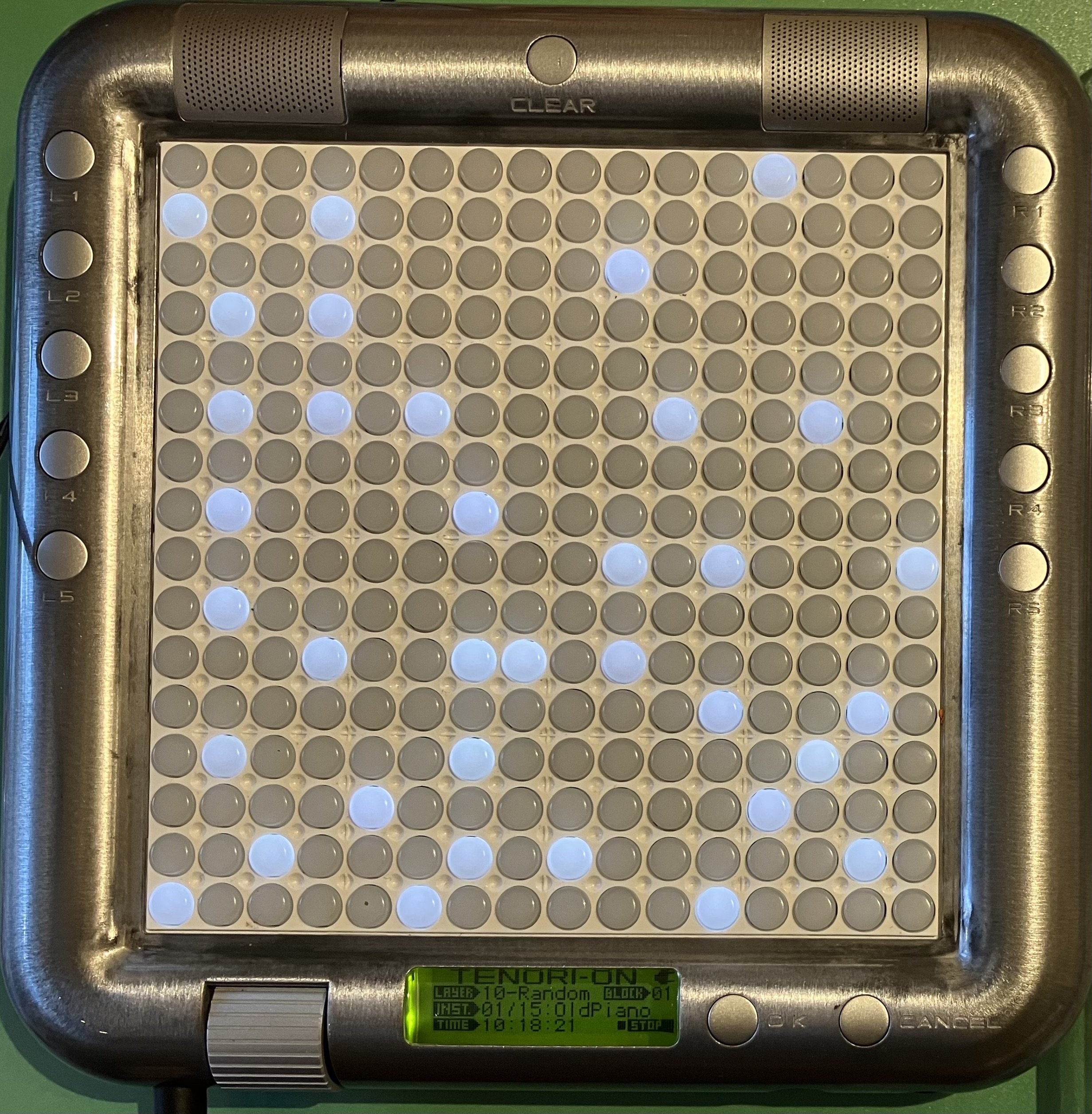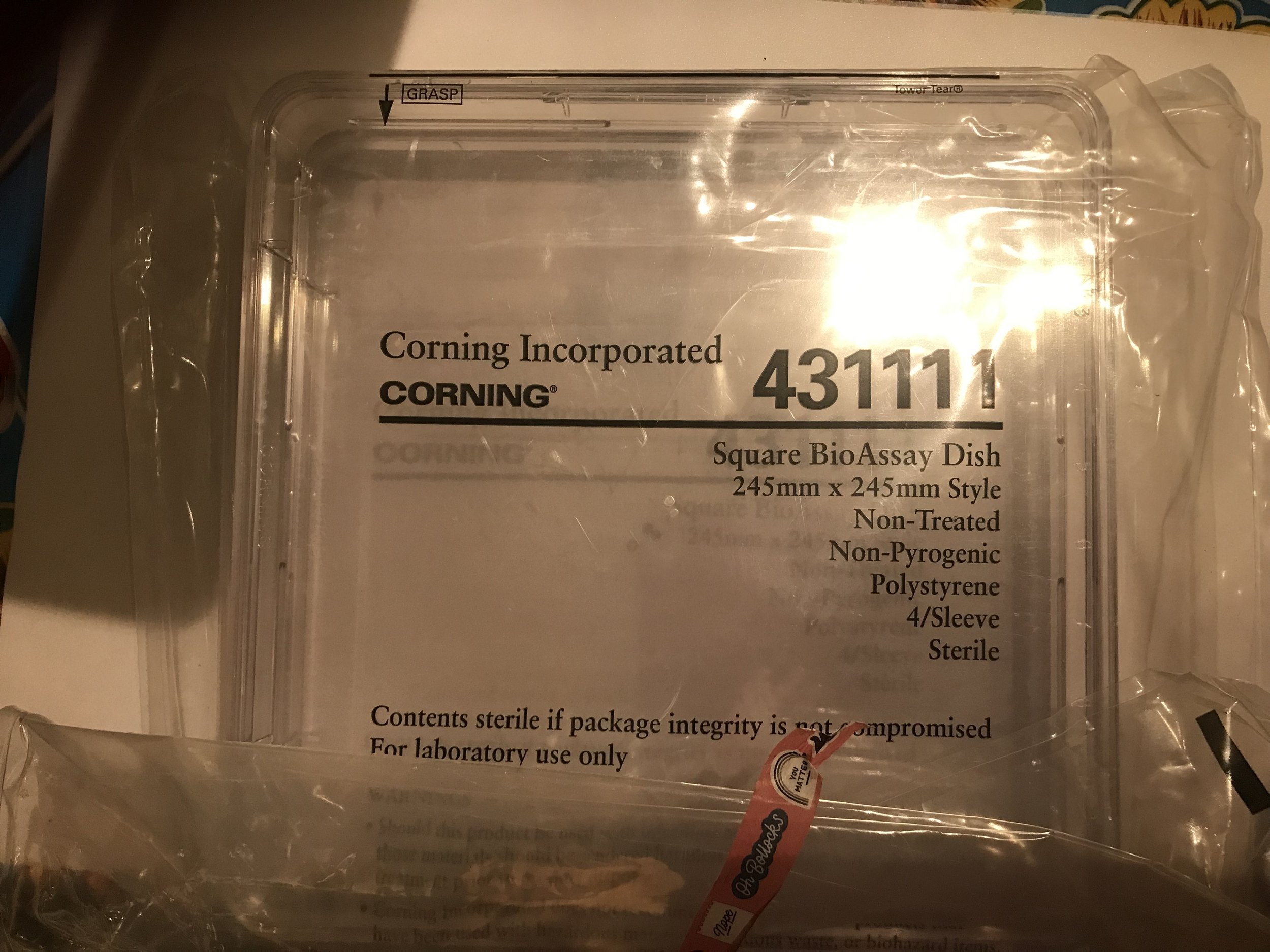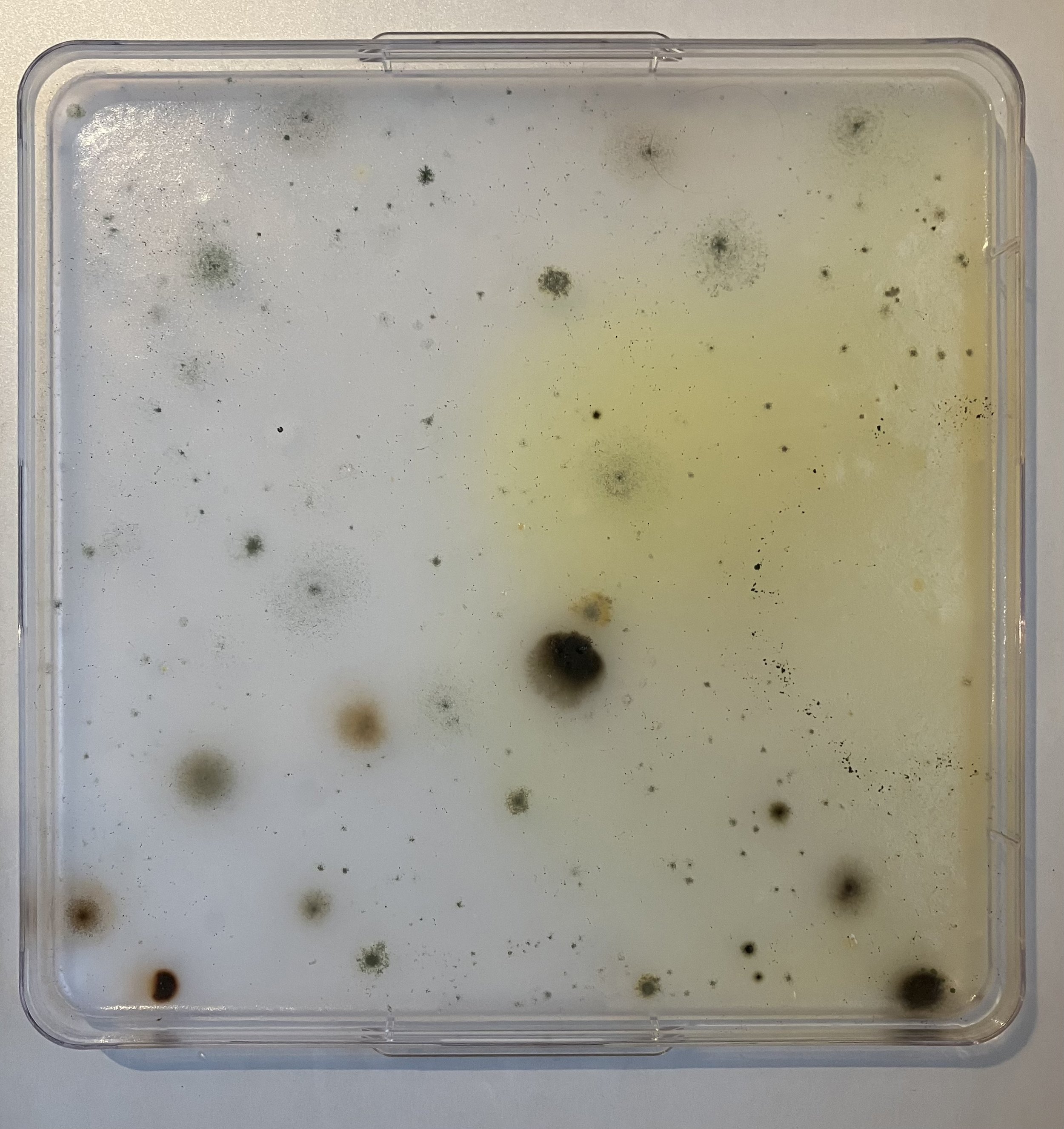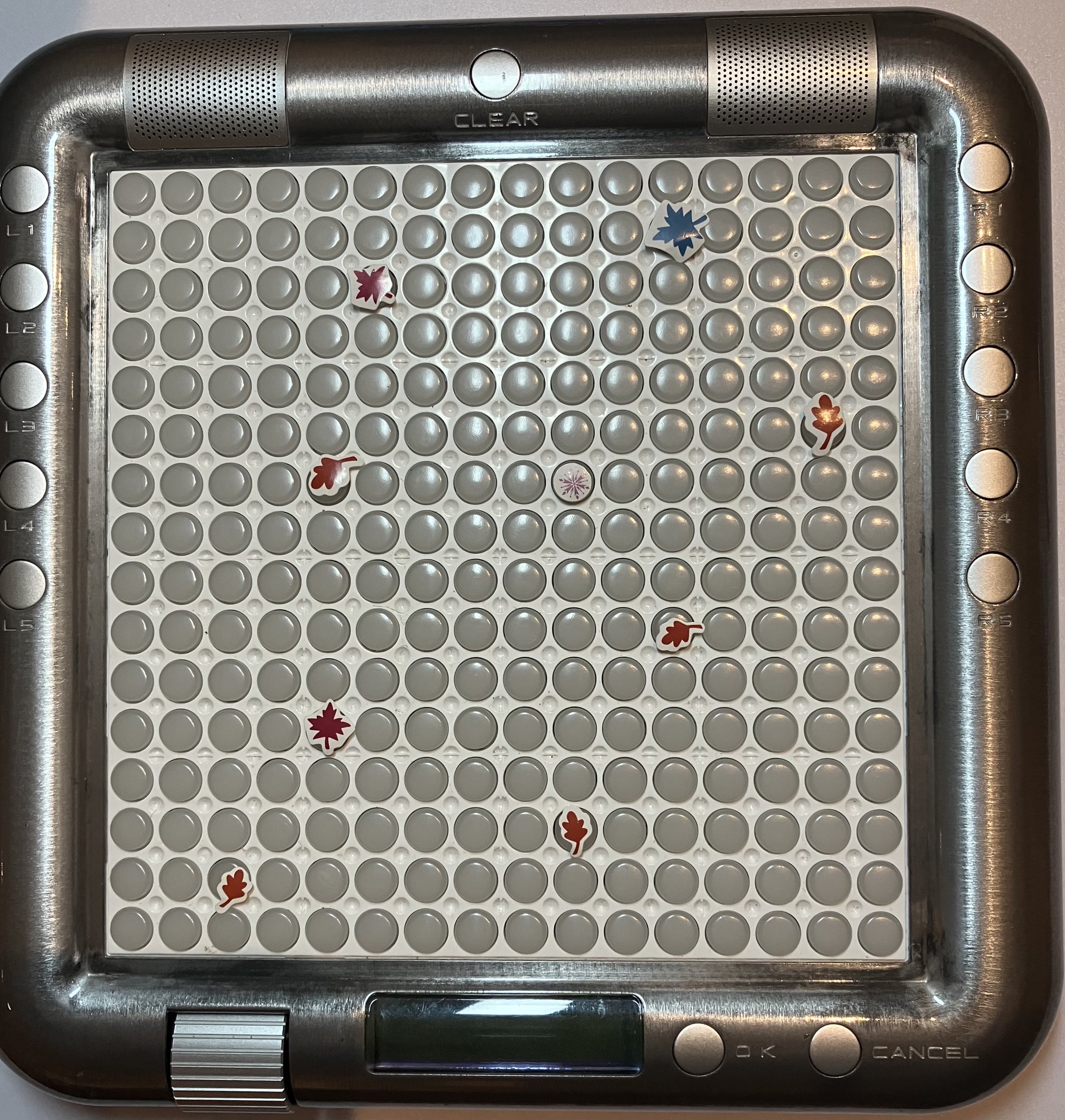
Microbiological Mapping and the Tenori-On
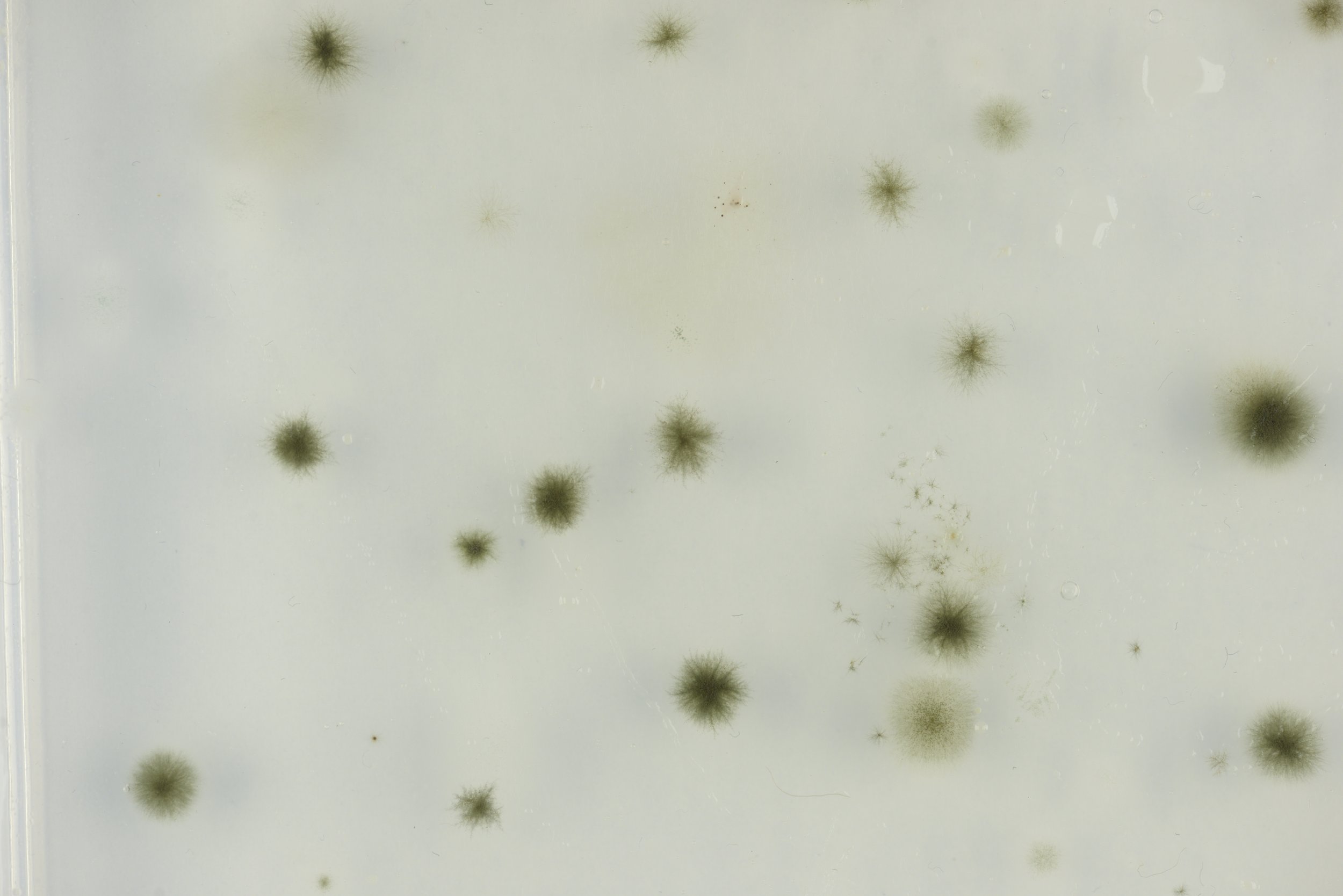
What is mapping…
Mapping is the name of the process I gave to projects which use locational information, such as growth on an agar plate to translate into sound. One such project is Biota Beats by the EMW street Bioteam. The algorithm rules for data collection are shown on the right, and are based on growth over time detected by a camera. It is not shown how this data information is converted into sound however, the output is available to listen on the website.
A second mapping based project is SonoSynthesis – Ars Electronica Futurelab from the Ars Electronica Future Lab as stated: “various microorganisms receive and express the musical data provided by an AI-based music composition system in a range of petri dishes. The biological data points on the petri dish grow and change over time, creating new data points and beautiful microscopic landscapes. The new data points go back to the AI system for further music generation – thus creating a cycle of artistic interaction.” The music in this case is from another project/system called “RicerCar” which is an AI informed, piano system.
These systems are therefore both based on a programming of rules/algorithm/AI to product music rather than playing an instrument.
Screengrab from the Biota Beats website showing the process of data collection. Mould Music
Musical notation paper on agar
I wanted my own mapping process as it would allow me to create multiple projects in the future whereby I can relate the microbiological information from a place/person/object into sonified information.
My initial attempt at translating microbial growth into music was a project called “Mould Music”. I placed musical notation paper onto an Agar base. However, there was little growth after leaving the Petri dish open for several hours. To encourage more growth, I extended the open period. I realized that the paper might be hindering the nutrition flow from the Agar, and that this would likely be a reoccurring problem. I realised that I didn't need to add the paper and could just add a digital overlay
I also decided to improve the nutritional content of the agar by purchasing a small amount of potato dextrose agar, which I went on to add to subsequent agar plates
Also as the music produced from the concept would need a musician with some skill to translate, I decided this probably wasn't the best approach and did not pursue it further.
What is a Tenori-on?
The Tenori- on is a light and sound based musical instrument designed by Toshio Iwai and Yamaha. I first saw one at a Bill Bailey gig around 2008 and it looked like a lot of fun to play. So when I saw that Marie Jones ( my textile collaborator I will discuss our work on the performance page) had one it set me on a path to consider it as a good fit for a mapping project. Unfortunately, Maries model was damaged so I found my own on Ebay. They are not available to buy commercially anymore however there is a dedicated community of fans which I also connected with, I felt like it was a low risk purchase!
There are 256 voices, 16 layers and the ability to build 16 blocks (or compositions). The layers are categorised as: score, random, draw, push and solo. The type of layer activates the sound in a different way. Despite this seeming complexity, it was designed to be fun and easy to use and it is! There is an added benefit that is it best played in low light, thus potentially reducing performance anxiety!
I set about how to define rules to define the relationship between the colonies on agar to the Tenori-On.
John Cage style Notations
Initially, I tried to create compositions based on the colonies on agar and draw/paint them (below) , inspired by experimental compositions from the book “Notations” by John Cage (example to the right) The notations were created by numerous composers who used ‘chance operations’ and their own invented systems to create the scores/ notations.
However I found the written notations difficult to play. The Tenori-On loops relatively quickly and I found it difficult to keep track of where I was in the composition so I abandoned this plan. Also I realised trying to make the Tenori-On more like a programming system was against its purpose (it was designed as something intuitive to play) adding a human improvised element is also allows for missteps and glitches, which added interest - at least this was the feedback of fellow students
Notations by John Cage
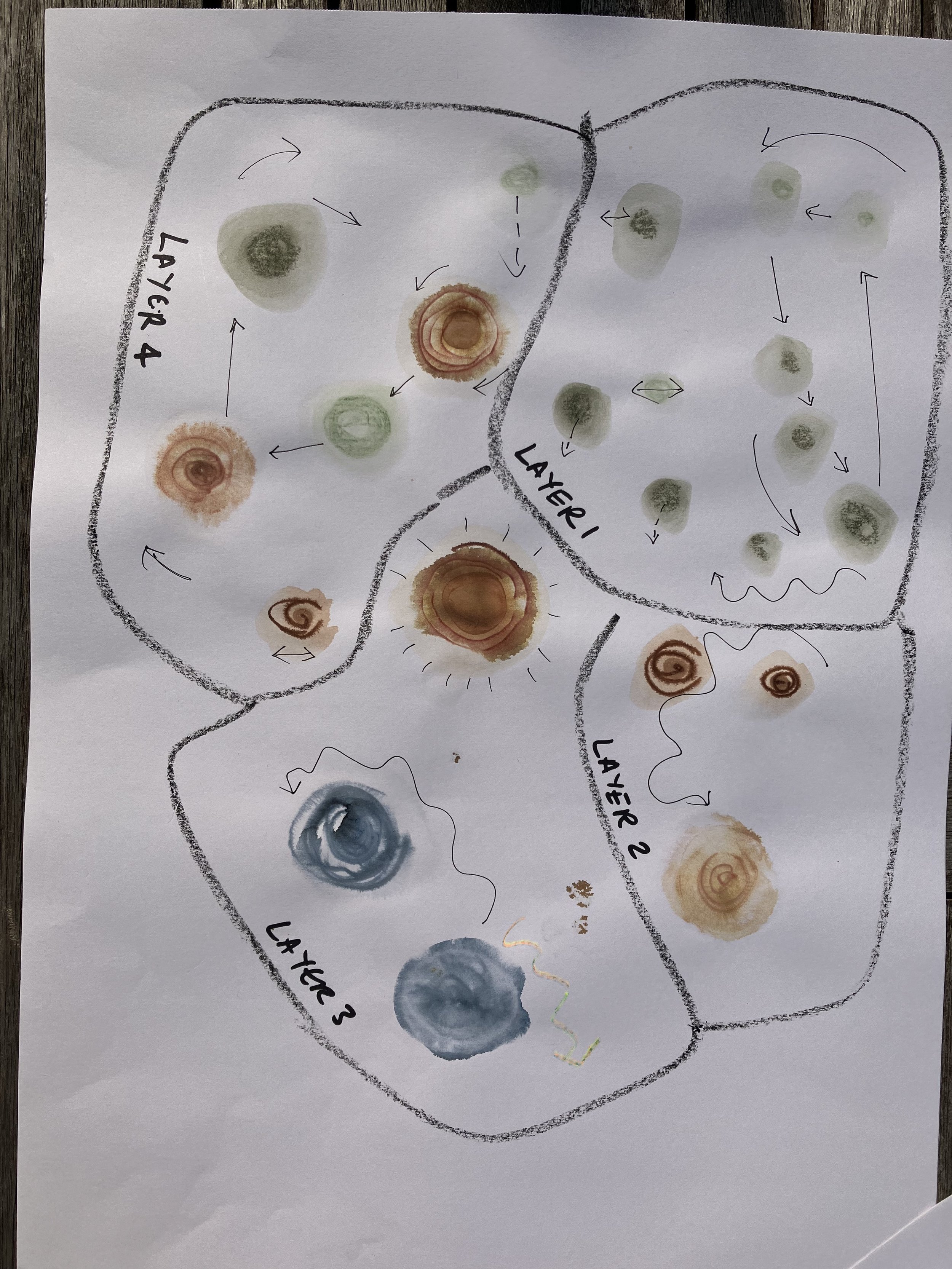
Layers shown by grouping colonies with composition instructions
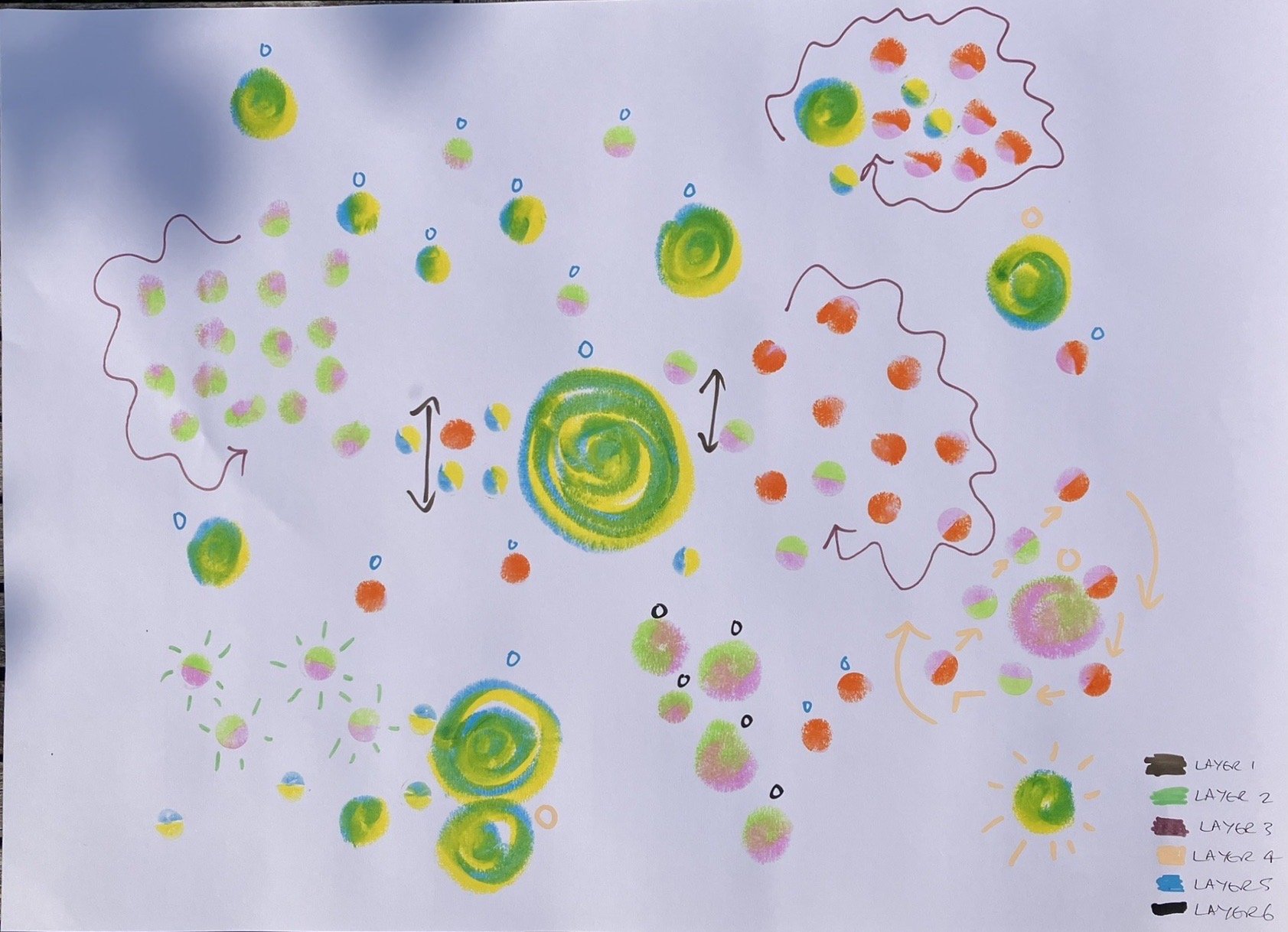
Instructions determined by colours and layers
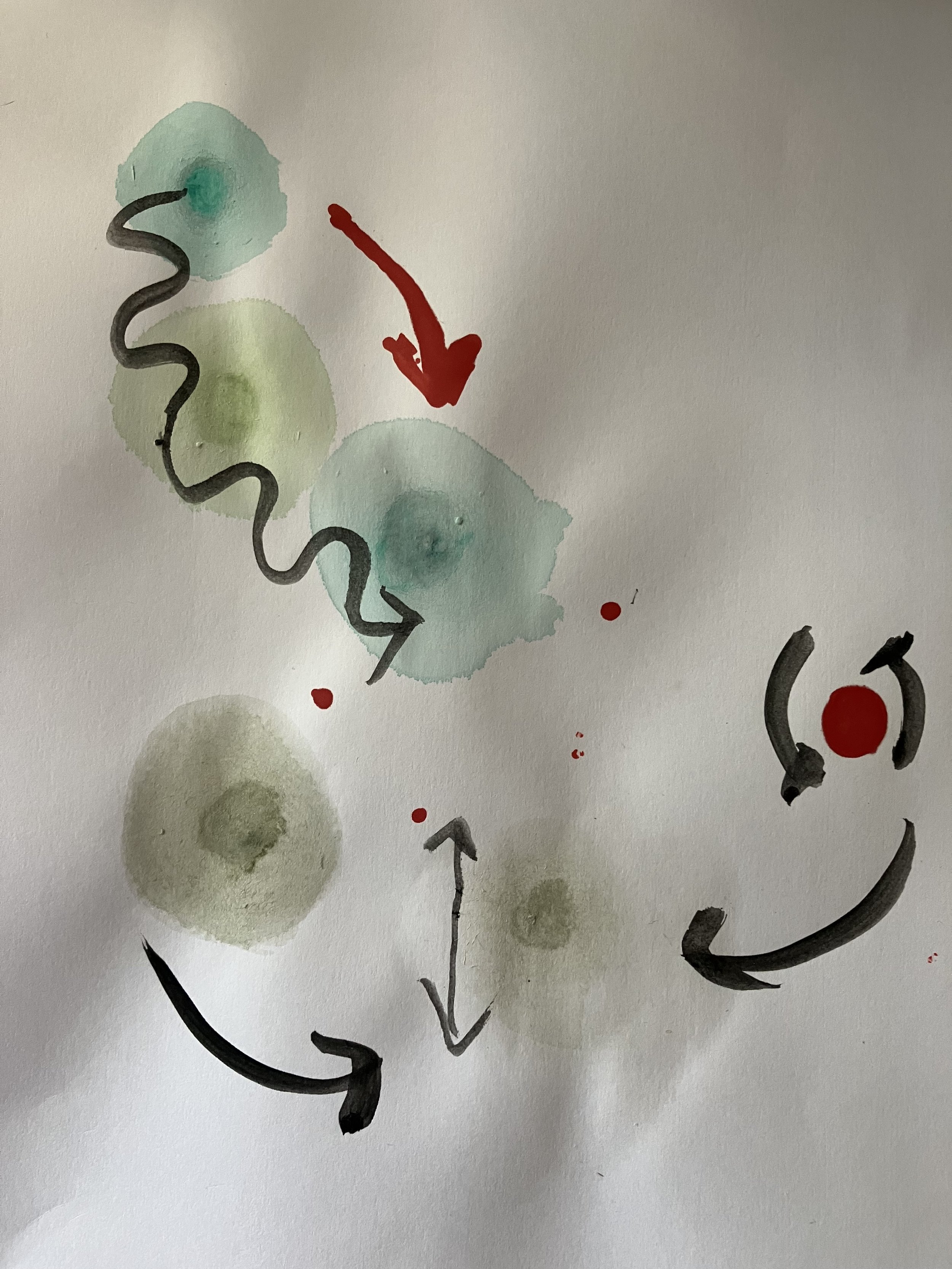
Composition sketch
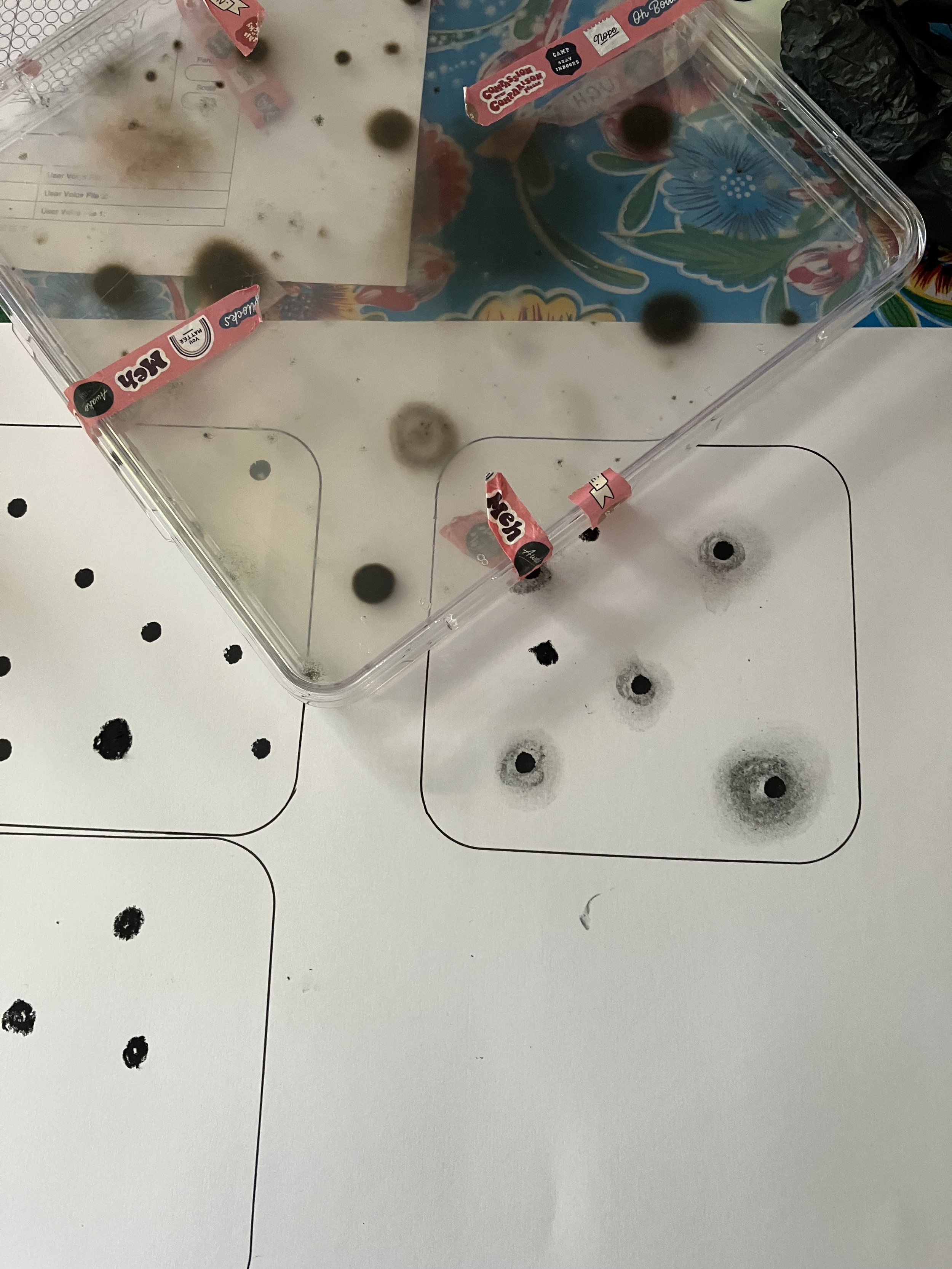
Starting a compositional sketch
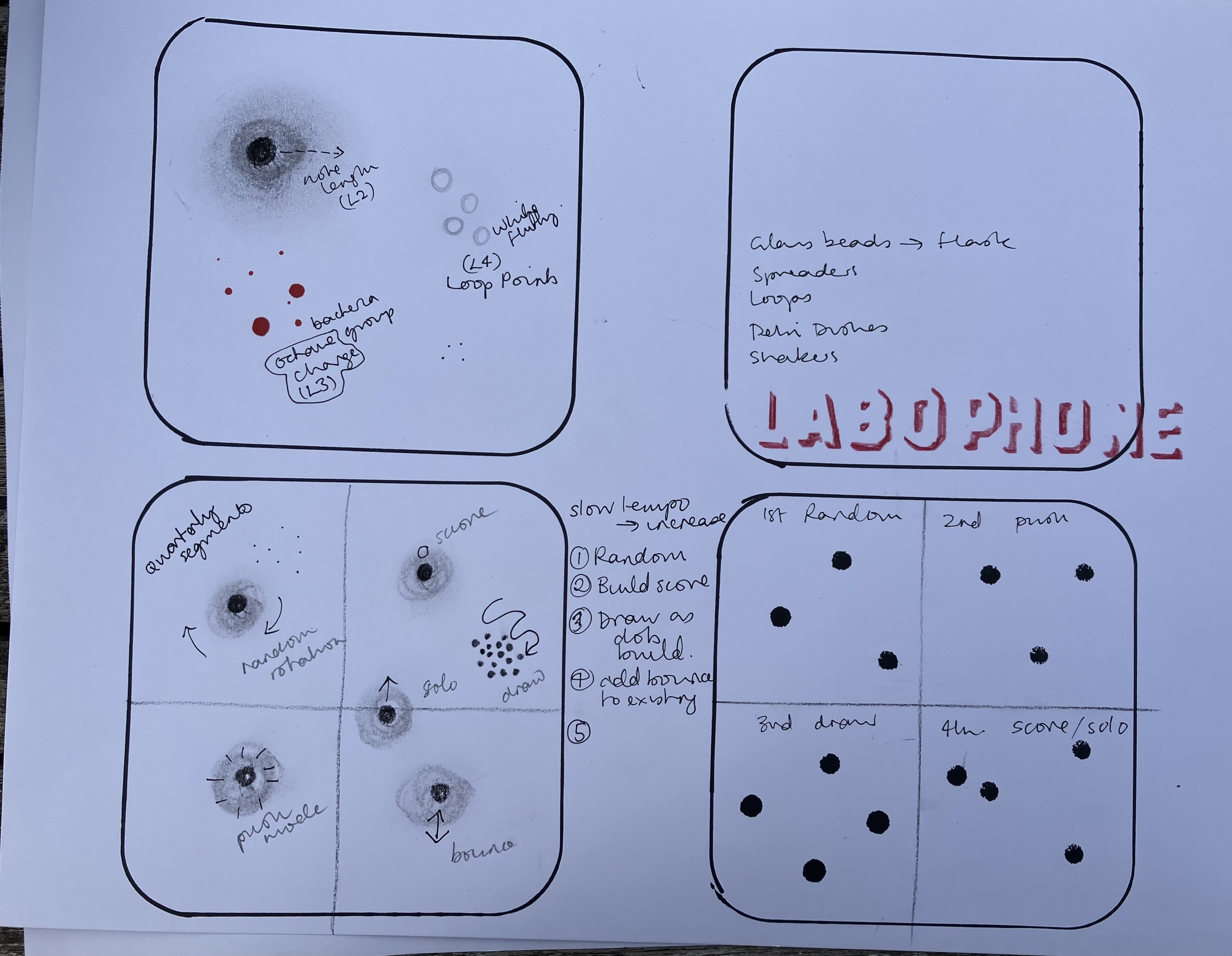
Attempts at a musical composition for the Tenori-On, considering rules relating to the size of the colonies
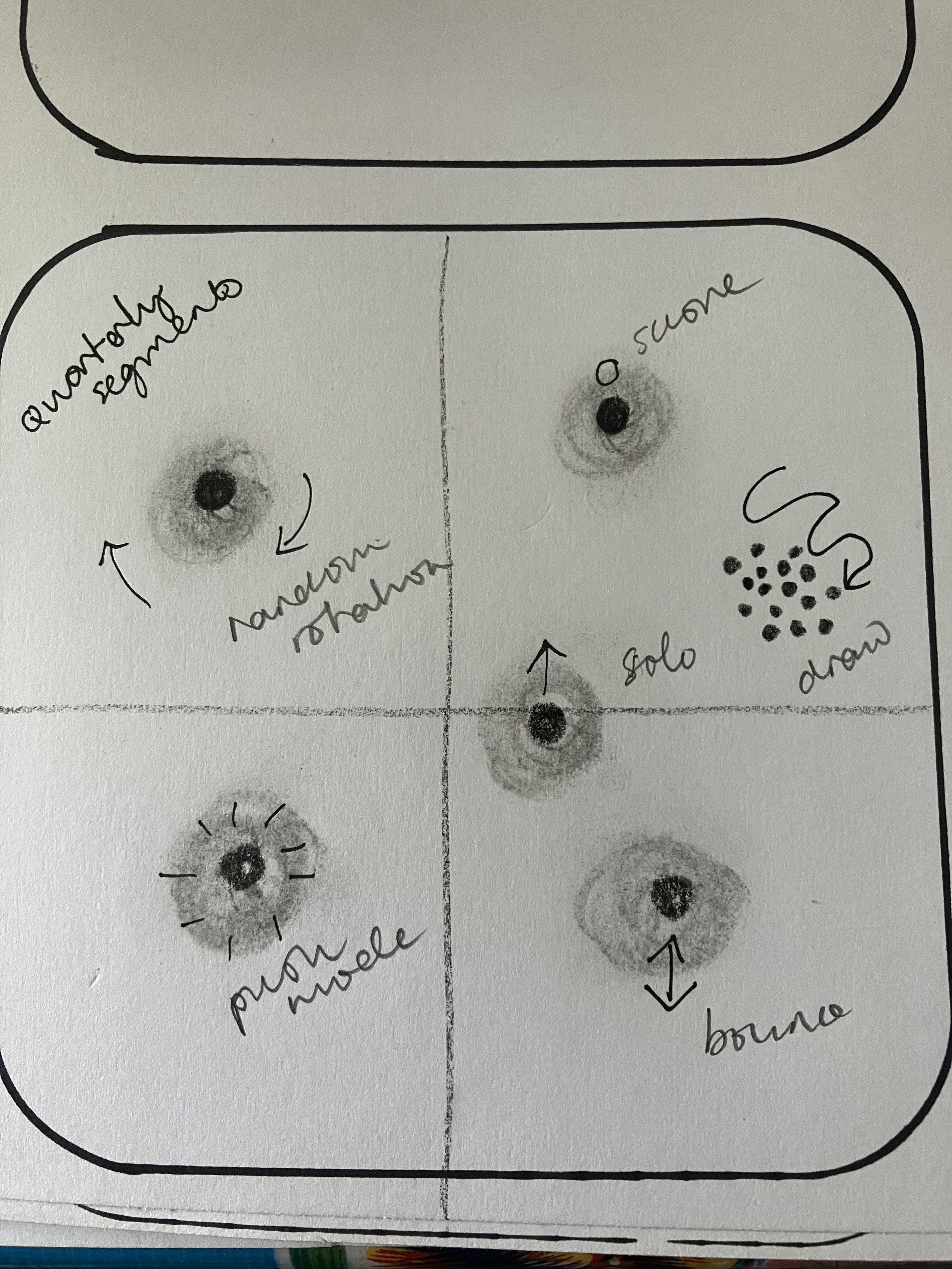
Mapping rules:
I developed the following concepts for a mapping process, also based on feedback from my musician friends, who liked glitches/misteps/mistakes as interesting rather than the perfect loop
Maximum 15 buttons per block (you can run multiple blocks into one song). In the lab colonies may be too numerous to count (TNBC) therefore too numerous to play should also exist! (TNTP).
Colonies determine the buttons and therefore the voices
The composition follows the principle of the bacterial growth curve (see pooling tab), start slow 50 bps and then increase for exponential growth!
Build first in random mode to add interest, push and solo modes to add randomness, score mode for death phase (repeating loops of declining energy)
Process: how to map
Using large square petri-dishes filled with potato dextrose agar I would leave the plate in the environment I wanted to map. This process can also be used for any microbiological sample. After growth is visible using a photo I overlay a 16 x16 drawing grid (I used the Procreate app for this) the squares then align with the buttons on the Tenori-On. After finding it difficult to keep track of the selected buttons I added small stickers as identifiers.
Colonies located in a square grid to apply to the Tenori-On
Bioassay dishes
Tenori-on with stickers on buttons
Agar Plate after exposure to the environment, colonised by moulds
Process Video:
Playing the Tenori-On.
As the Tenori-On is a light and sound interface. As I have been considering future performance (and generally feeling that I don’t want to do this!), then it’s fun to note that a further benefit of the instrument is that it would be best to play it in low light!
In the video I am constructing/ experimenting with a soundscape. I have added stickers to the Tenori-On buttons, so that I know which ones to activate.
Video of experiment of Tenori-On playing based on the position of stickers on the instrument


